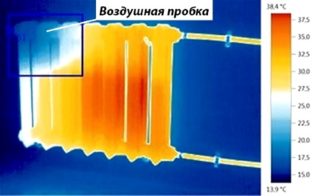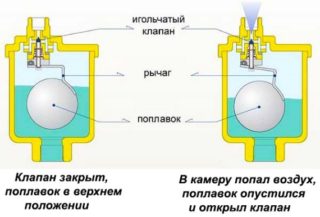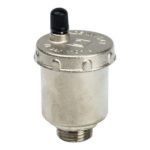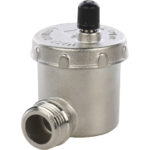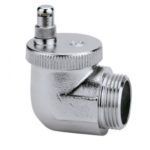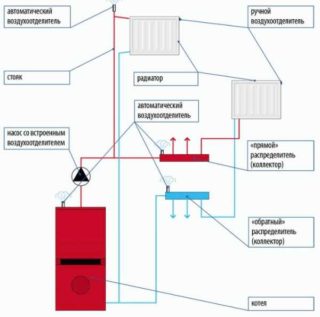When air circulates in heating pipes, bubbles form at the moment of filling the system. They interfere with the normal movement of the coolant. Air vents for heating systems automatically remove them. For the correct choice of the device for a home or apartment system, you should know its operating principle, design and installation rules.
Why does system airing happen?
Air masses in pipes adversely affect the operation of heating equipment. Iron that comes in contact with oxygen rusts faster. In the presence of plugs, the coolant cannot fully move along the circuit, which makes heating minimal. Air bubbles also cause breakdowns in the circulation pumps.
Air congestion can occur for several reasons:
- The coolant is ordinary water with undissolved oxygen. The substance at the moment of heating comes into a gaseous state and accumulates on the bends or at the top of the pipes.
- The system quickly fills with water.
- The coolant is supplied from above, and bubble displacement does not occur.
- Connection points have lost their integrity during operation.
- Incorrectly designed heating system.
- Connecting the radiator at the wrong angle.
- Air access to the highway during repair work.
Airing in a constant area leads to a decrease in pressure inside the communications. To eliminate this phenomenon, air ducts are installed on pipelines.
Design features of air vents
The air vent from the heating system is designed as a cylindrical or conical brass body. It contains a hollow polypropylene or teflon float. The element is connected to the release valve by a special lever.
The release valve is made with a plastic plug (cap), which prevents leakage of water in the event of a malfunction. At the time of operation, the cap is open, but the user unscrews it.
On the side of the diverter is a nozzle connected to the housing by a sealing ring. To lock the passage channel of the nozzle, a holder with a spool is designed.
When connecting, an adapter from a non-return shut-off valve is used in the form of a spring-loaded locking mechanism and a flag associated with it. At the time of screwing, the device presses on the flag, which drops down, and water enters the air vent housing.
Operating principle
The automatic air vent for the heating system has a very simple principle of operation:
- The chamber is filled with water in working condition. The float is on top, the valve with the spring is closed.
- With the accumulation of air at the top of the chamber, the amount of coolant decreases. The float gradually lowers.
- At the moment the coolant falls to a critical point, the float overcomes the rigidity of the spring mechanism. After this action, air is blown out.
- Due to excess pressure, water removes air from the tank, enters its place and pushes the float.
- The valve goes into closed state.
Part of the air bubbles remains under the cover, but the heating system will work in normal mode.
Descent Characteristics
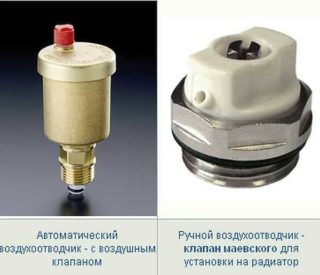 Manufacturers produce devices that are equipped with a multi-apartment type of buildings or a private house. When choosing a vent, it is worth paying attention to the following characteristics:
Manufacturers produce devices that are equipped with a multi-apartment type of buildings or a private house. When choosing a vent, it is worth paying attention to the following characteristics:
- Thread Diameter - ½, ¾, and 3/8 inch modifications available. Domestic marking of the first Du-15, the second - Du-20.
- Mounting method - direct and side devices with an upper or side exhaust valve are used.
- Type of thread - external and internal.
- Working pressure - air vents for the house can operate at a maximum rate of 10-12 bar. In an apartment it is better to choose an option for 6 bar.
- Fluid temperature limit - for centralized systems, models up to +90 degrees are suitable, it is better to put the product up to +150 degrees in private home ownership.
Air vents made of sanitary brass are more durable and reliable than siluminovye.
Varieties of air valves of automatic type
Depending on the design, air vents for heating are radiator, angular and straight. Despite the differences in appearance, the devices have the same air removal mechanism.
Direct options
At the upper end of the vertical riser, the collector of the warm floor, the circulation pump, it is better to install a direct air vent intended for the heating system. It crashes into the top of a vertical pipe using a tee and discharges air from the highest point automatically.
Corner Modifications
If the pipe is horizontal, an angle model is required. It has a nozzle rotated at an angle of 90 degrees. The trigger is also used in problem areas - on the threaded end of a dead-end branch.
All direct system air vents may be replaced by angular ones.
Radiator air vents
In order to efficiently and quickly remove air jams in batteries, a radiator car air heater is used - it is best suited for an apartment heating system. The device has an angular design, but due to a special threaded thread, it is installed without an adapter. Twisting the bleed screw is done with a rotary knob, a hexagon wrench, a flat screwdriver (slotted elements).
Radiator models are compatible with aluminum and bimetal, equipped with valves in the form of a threaded adapter with springs. The element must be screwed onto the thread before the ejector.
- Straight
- Angular
- Radiator
The valve adapter is easy to clean from accumulations and maintainability.
Places for installing air vents
Air bubbles most often form in the upper part of the line, which is most removed from the connection point. For this reason, the air vent must be placed vertically on the heating system pipe in the following areas:
- The top point of the system. Installation of pipes is carried out with the output up. If the communications go around the obstacle and are pulled down, the descent is mounted at the top. It prevents airing when raising light fumes.
- Batteries The heating type of devices has a complex shape and a large number of sections. Air accumulates in their cavities. A threaded automatic air vent should be used for heating radiators located above, below, diagonally.
- Heated towel rails in the form of stairs. If the straight pipe is not included in the kit, the drainage device is placed on the upper part. This will eliminate the inconvenience when tightening the hand screw, preserve the aesthetic appearance of the product.
- U-shaped trunk branches and bypasses. The pipe, twisted into a loop, will accumulate air, so the automatic shut-off valve is placed at the highest point.
- Tying the boiler. The valve prevents damage to the heating equipment when the system is airing.
- Water gun. Radiator manifolds and circulation pumps are equipped with a mechanism. If they are placed vertically, an air vent is screwed at the top.
- Comb collectors for underfloor heating.Elements for the contour pipeline are discharged above the floor level, so air vents are placed on the supply and return points of the coolant.
If the pipe is located above the door, the air vent should be installed at the top of the opening.
Features of installing the air vent in a private house
An air vent designed for heating communications of a private house should be installed strictly in an upright position. For installation work you will need a threaded tee, FUM tape, open-end wrench.
The installation process is implemented in stages:
- Tee mount. You will need a piece of pipe, on which a tee is fixed by soldering, glue or simple shrinkage.
- Preliminary check of the location of the vent at the highest point of the equipment. The device connector must have an upward direction.
- Mounting the shut-off valve on the device hexagon with an open end wrench.
- Connect the automatic air vent so that the protective cap with the nipple faces up.
- Tightly tighten the cap to prevent accumulation of debris.
- Checking the tilt of the device (for radiator models). The battery section with the trigger slightly rises.
After installation, the devices do not need to be adjusted - they will discharge air automatically.
It’s better to install a car air vent with a shut-off valve - it’s easier to remove it for repair or replacement.
Features of a multi-stage circuit
A multi-stage deaeration scheme provides for the installation of automatic devices along the entire line. Such connection of vents allows locally and simultaneously removing air jams. An automatic device is placed in a turning zone, a loop is formed. To extend its valve service life, an additional filter is mounted. After assembly, the system works when the radiator is hot below, but cold above.
In two-story houses, the installation of tap-off devices is necessarily carried out on the top floor.
Corner, direct or radiator air vents are suitable for the heating main of an apartment building or a private house. The automatic device is simple, reliable and maintainable. After installation, the owner may not waste time monitoring the system and manually venting.
